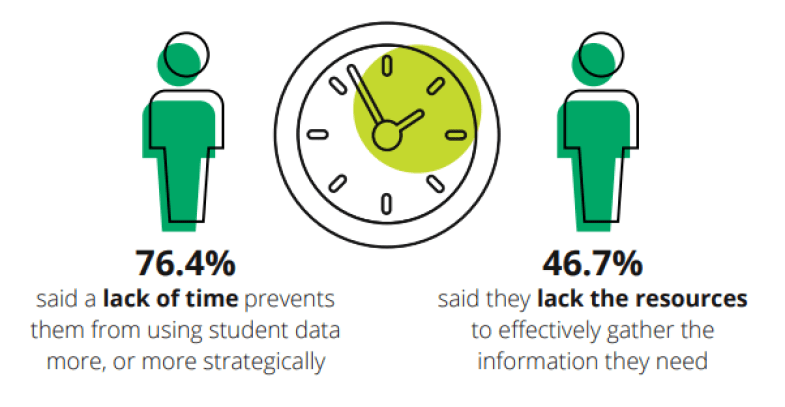Title: Did COVID-19 reveal a student engagement data gap?
In a recent Pearson survey, 71% of university educators and senior support staff said that student engagement data is important, or very important, to their teaching and learning decisions (Student Data Survey, August 2021.)
Certainly, data analytics are becoming more prevalent in higher education; helping universities to make informed decisions on where to invest time and resources, and identify students who are struggling, or more at risk of struggling and dropping out.
During the switch to online learning as a result of the pandemic, data analytics have, at times, been the only available indicator of engagement.

But while the ability to track student engagement with teaching remotely has been highly valuable, it has also been flawed. Online lessons have meant that teaching staff can identify students ‘attending’ lectures, but with cameras often switched off and microphones on mute it’s been impossible to confirm whether they are actively listening in, or if lecturers are talking into an inattentive void:
“While students may log in to a session, they are not necessarily focussed and may be distracted or purposely engaged in another activity.”
“Students could just leave the laptop on.”
(Student Data Survey, August 2021.)
The lack of nuance within engagement data also gives rise to concerns. Of those who are ‘disengaged’, it is often difficult to understand the reasons why from data alone. For many, the issue can be a shortage of time and resources – not a lack of academic interest. During the lockdowns for example, working parents who were balancing their studies with work and homeschooling, or lower income students who were struggling to access laptops and Wifi, wouldn’t have been identified by data tracking that simply notes attendance, VLE logins and consumption of media resources.
In the Pearson survey, 56% of university staff said the move to online and hybrid learning had revealed student data gaps.
But this is not to say that engagement data isn’t valuable – at even a very basic level it gives universities the opportunity to intervene early when students are identified as ‘switching off’ – and many institutions now employ triggers based on attendance analytics to take these steps.

The true value however, comes from making a concerted effort to analyse the patterns in engagement data alongside other metrics, such as information on student mental health, and taking steps to head issues off before they occur.
There are many examples of universities in the UK and Ireland that are using data analytics both to diagnose, and predict potential problems. The University of the West of England for example, recently used data analytics to identify an increase in student anxiety from late January to early March and is looking into ways to provide greater support before Christmas to pre-empt these problems.
The potential for data analytics to transform the way institutions educate, support and operate is, in fact, huge – so long as the right data is used in the right way.
The challenge lies in finding the time and resources to do so. In the same Student Data Survey, 63% of respondents said that they hadn’t been offered training on using the engagement data they currently have access to, and 76.4% said a lack of time prevents them from using student data more, or more strategically.

Pearson’s new report examines this pressing issue of student data and its potential to improve the teaching and learning experience without impacting on educator workloads. It reviews the current state of play in UK universities, provides examples of best practice, and introduces practical tools and strategies that can unlock powerful data insights.
Download ‘Crunching the numbers: the state of student data in Higher Education’ here.

















